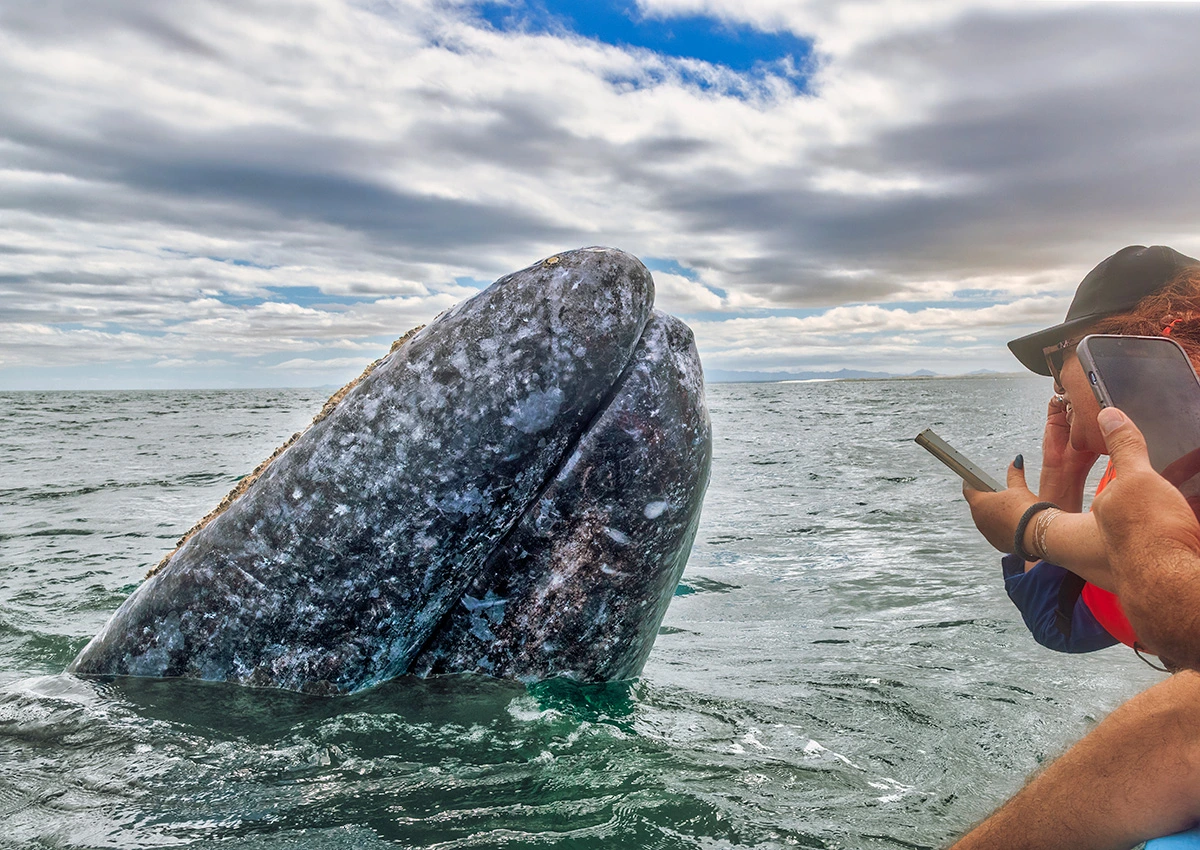
All photos © Robin and Arlene Karpan
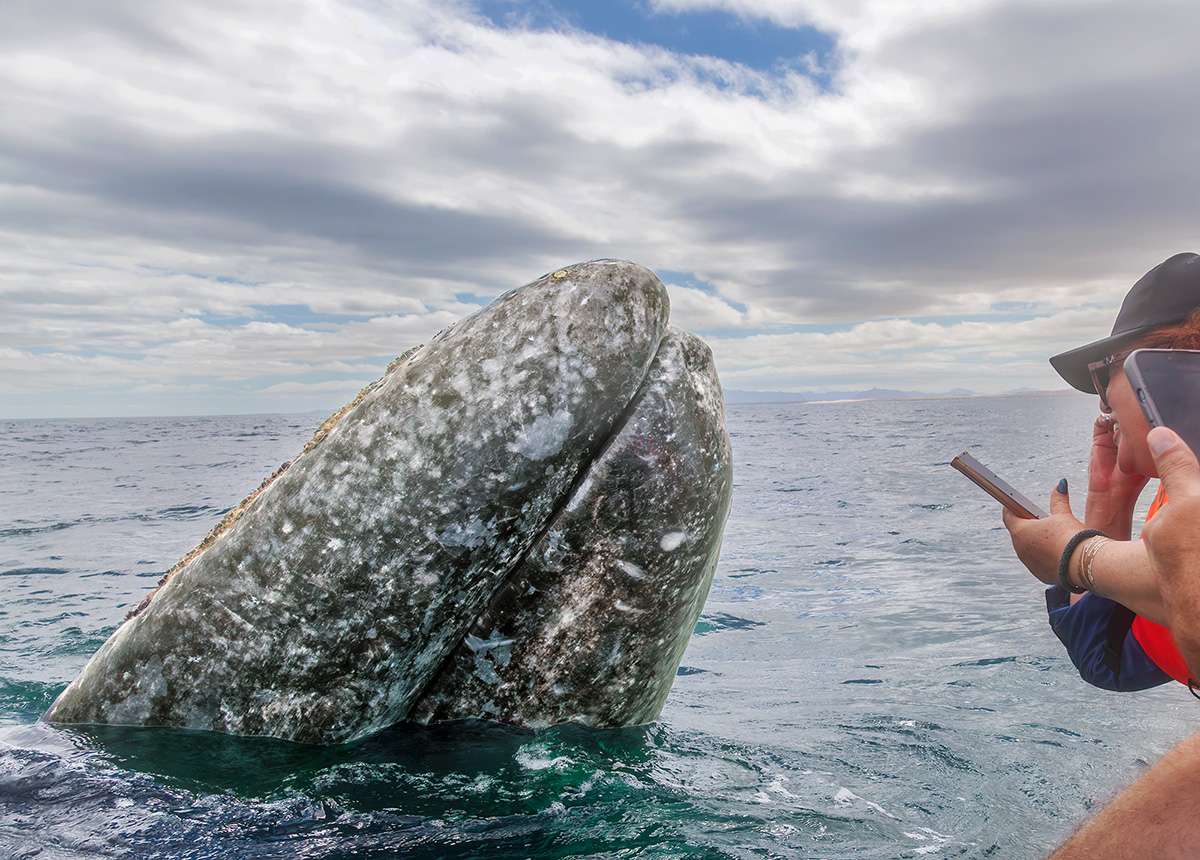
Mexico’s Baja California Sur has a reputation for the best whale watching in the world. We have watched whales in other places, some experiences being better than others. However, this was dramatically different with massive creatures so close that we could reach out and touch them.
The remarkable gray whale migration
Gray whales of the eastern Pacific Ocean have the longest migration of any mammal, travelling up to 30,000 kilometres annually.
They summer in the nutrient-rich waters of the Bering and Chukchi seas between Alaska and Russia. In fall, they head south to the warm, protected lagoons of Mexico’s Baja California Peninsula, where they breed, give birth and raise their calves.
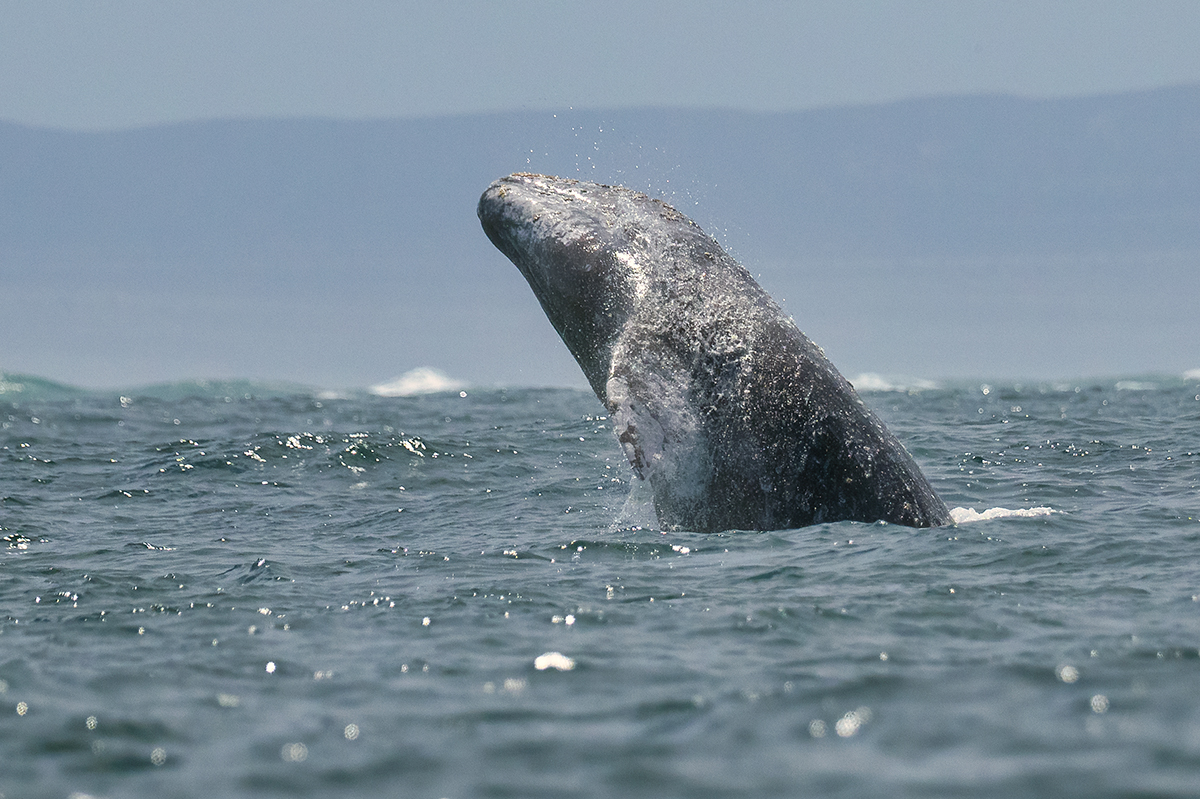
The gray whales favour three lagoons along the Pacific coast of Baja California Sur, the state covering the southern half of the Baja California Peninsula – San Ignacio Lagoon, Magdalena Bay, and Ojo de Liebre Lagoon. While all offer whale watching excursions, Ojo de Liebre Lagoon near the town of Guerrero Negro is generally considered the top spot and was the one we visited.
Guerrero Negro and Mario’s Tours
Guererro Negro sits on the Pacific coast about halfway along the peninsula, next to the border where the states of Baja California and Baja California Sur meet. It was declared a refuge in 1972. Ironically, despite its protected status today, Guerrero Negro (Black Warrior) was named after a whaling ship that was wrecked off the coast in the 1800s.

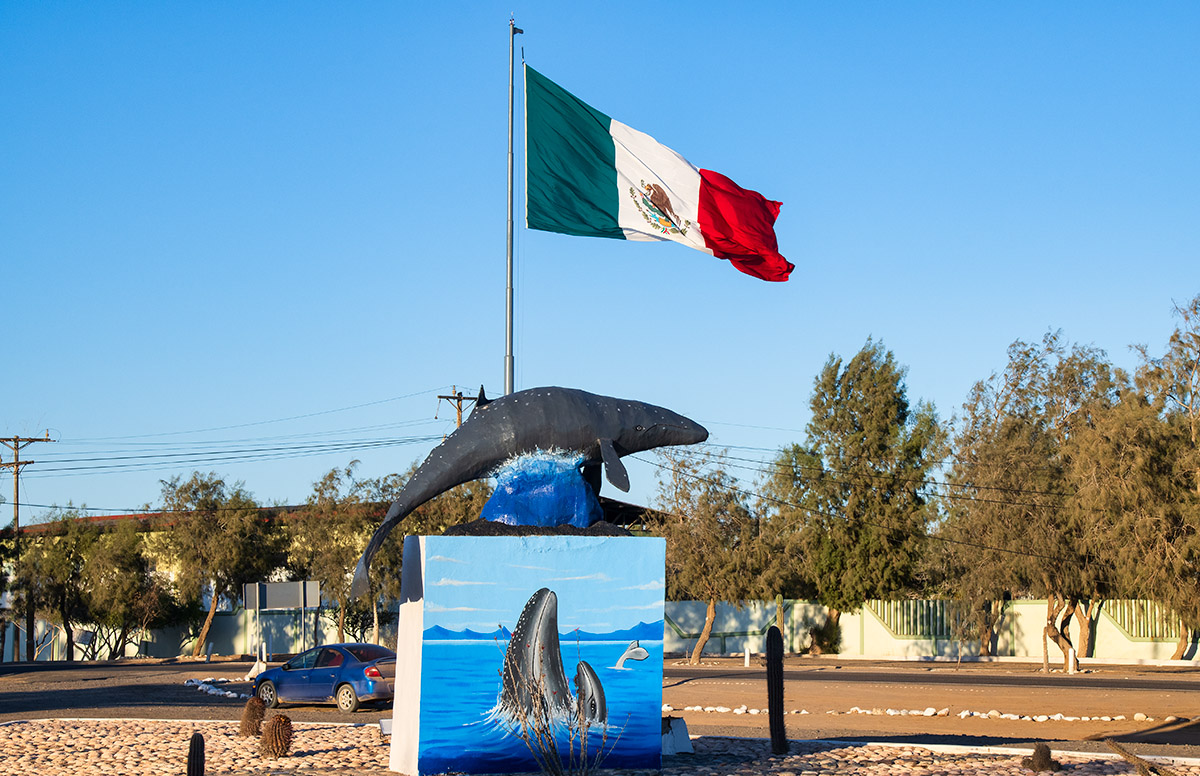
Before we headed out with folks from Mario’s Tours, they provided an orientation about the whales and the trip, and there was time to see the exhibits in the Whale Museum in the company’s office building. An official census taken the day before our mid-March visit indicated 414 whales in the lagoon.
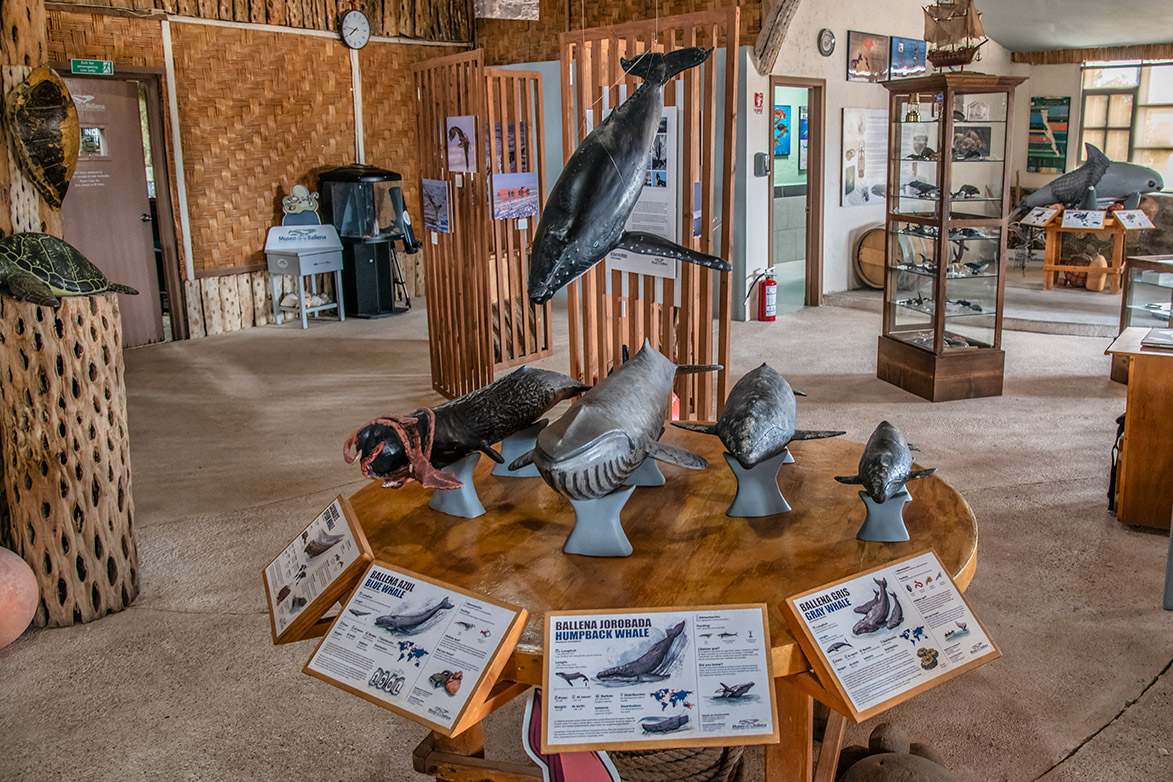
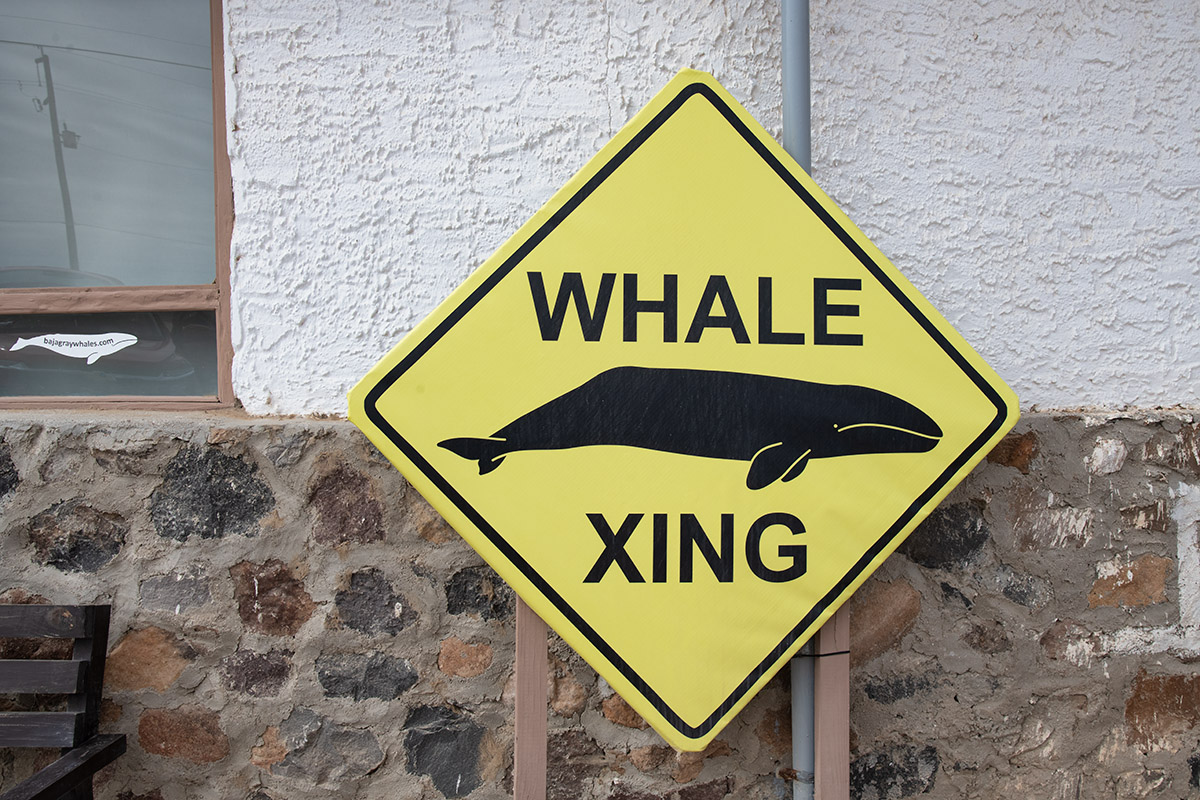
On the drive out to the bay, we passed through a salt mining and processing plant, the largest industry in the town.

Heading into the lagoon
A 10-minute boat ride took us to where the whales hang out. All around, we saw water spouts from whales’ blowholes. Our skipper pulled into the midst of the activity, stopped and then we sat there. The big difference from most whale watching tours here is that we don’t go looking for whales; they come looking for us.
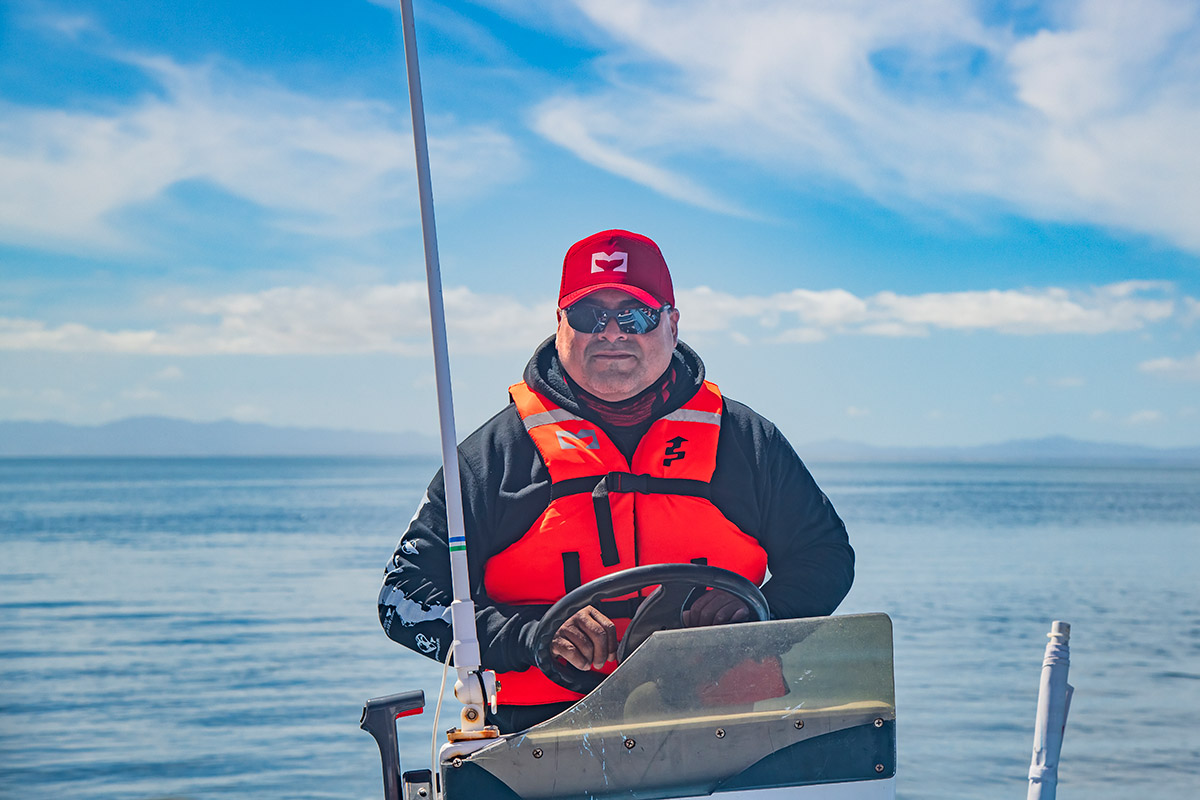
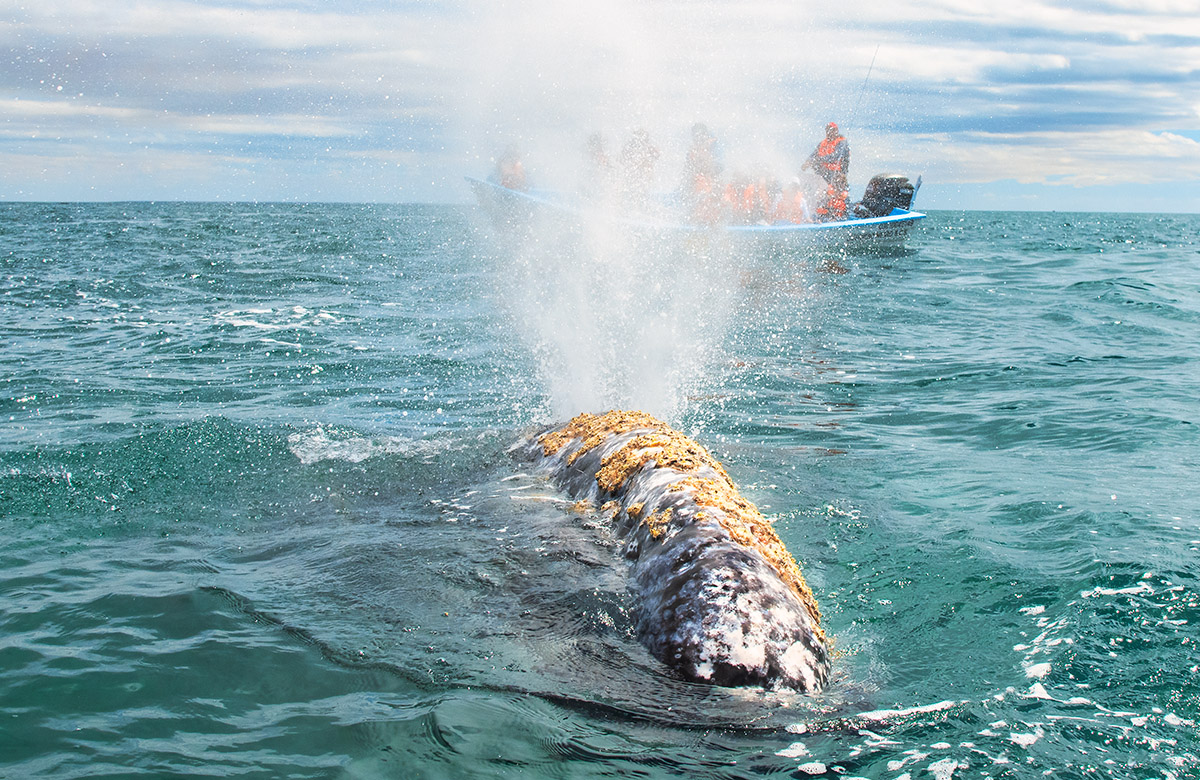
A few minutes later, one huge monster was beside our boat and swimming underneath it. It kept crossing from side to side as if it was playing with us, perhaps amused at seeing passengers frantically scramble for a better view and excitedly pointing cameras in different directions.
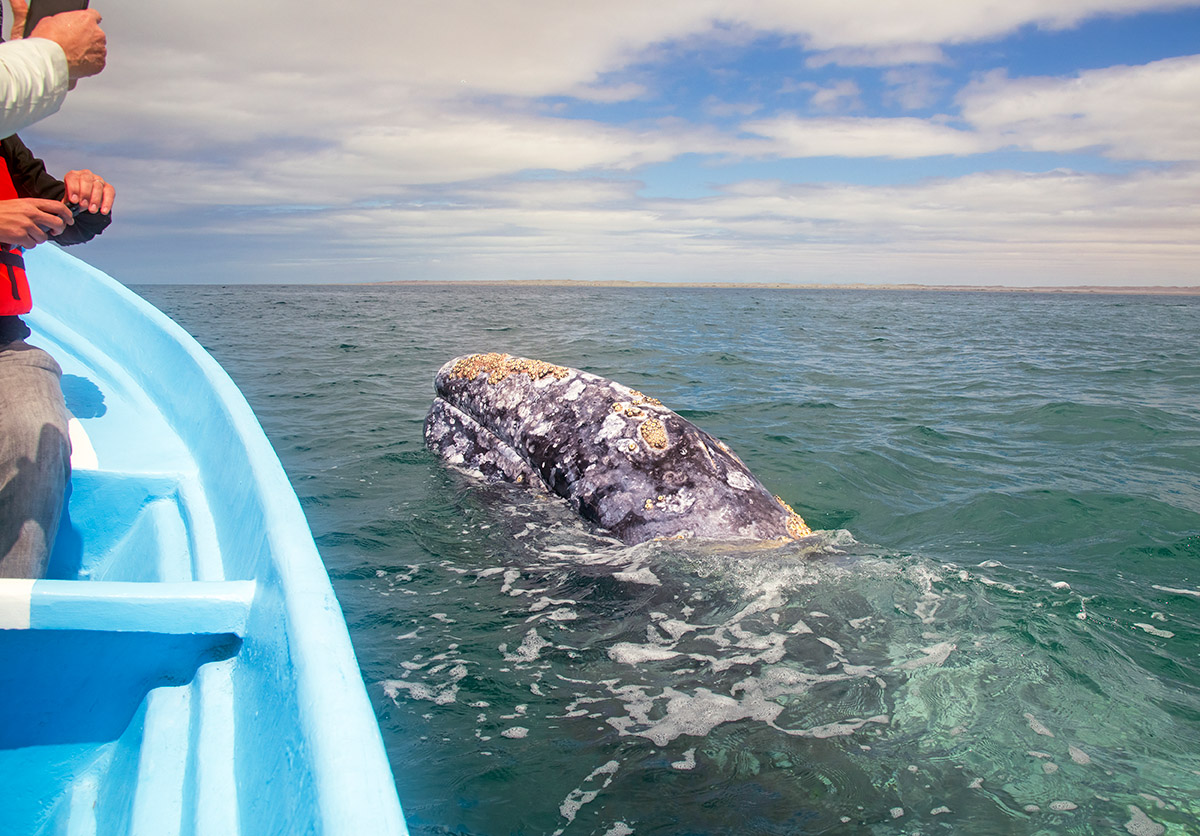
Tours use pangas, flat-bottomed fishing boats holding about 10 passengers. They are much smaller than the whales, which can reach 14 metres long and weigh up to 40 tonnes.
If one of these leviathans wanted to wreak havoc with the boat, it would be a simple matter. Yet these gentle giants come within inches of the boat without disturbing it.
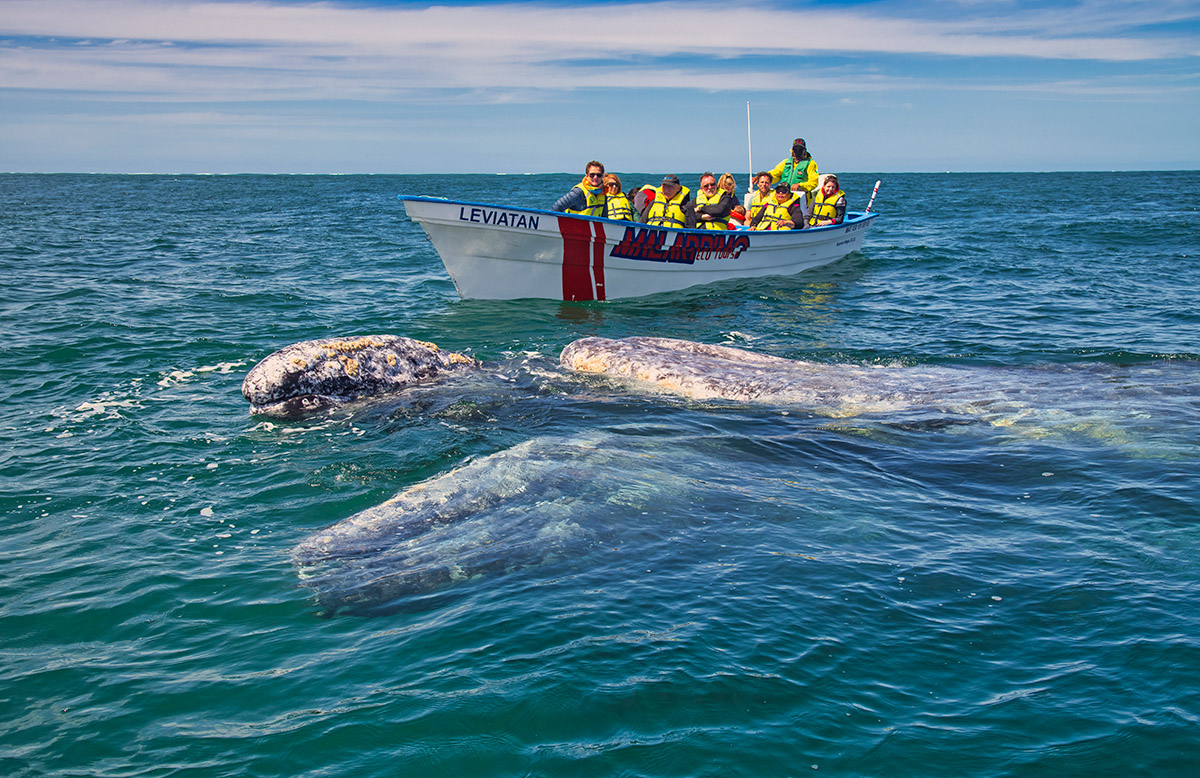
“There’s another one,” someone shouted as a whale came from behind.
It raised its head out of the water for a better look and then came so close that it was easy to reach out and pat it. Its skin felt somewhat like a vinyl chair covering.
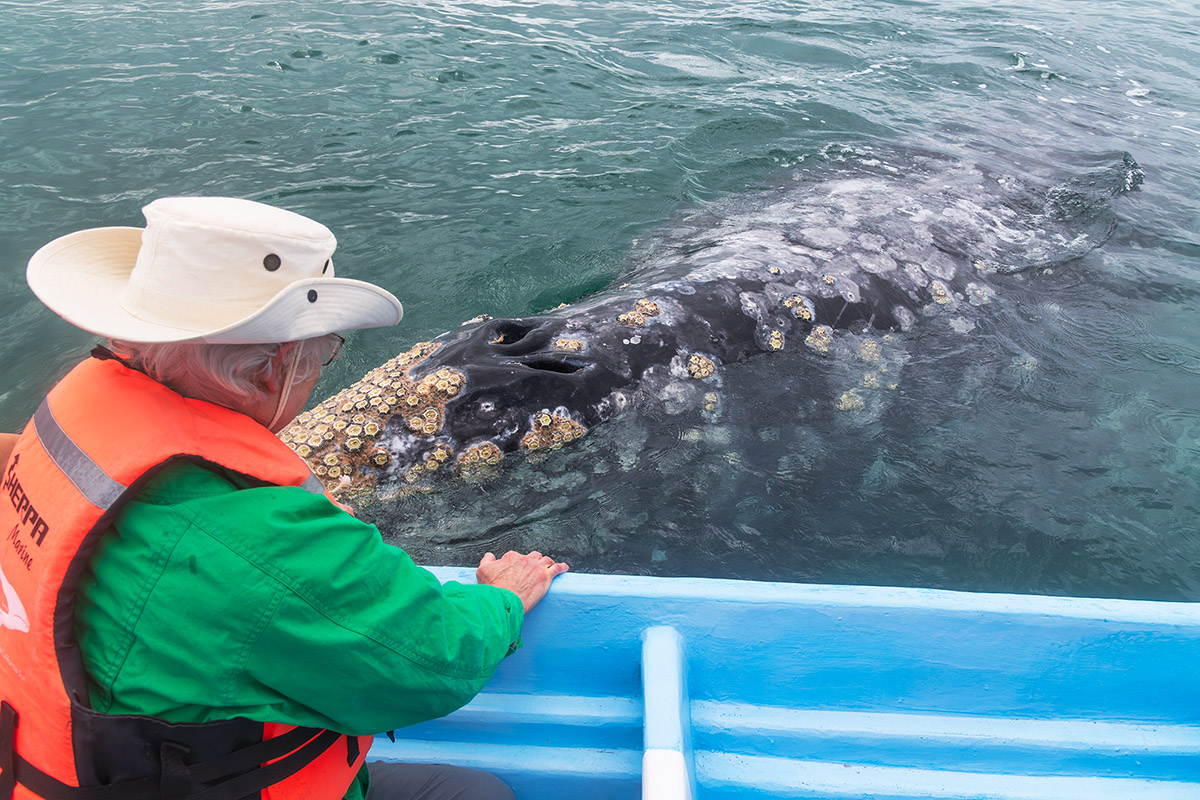
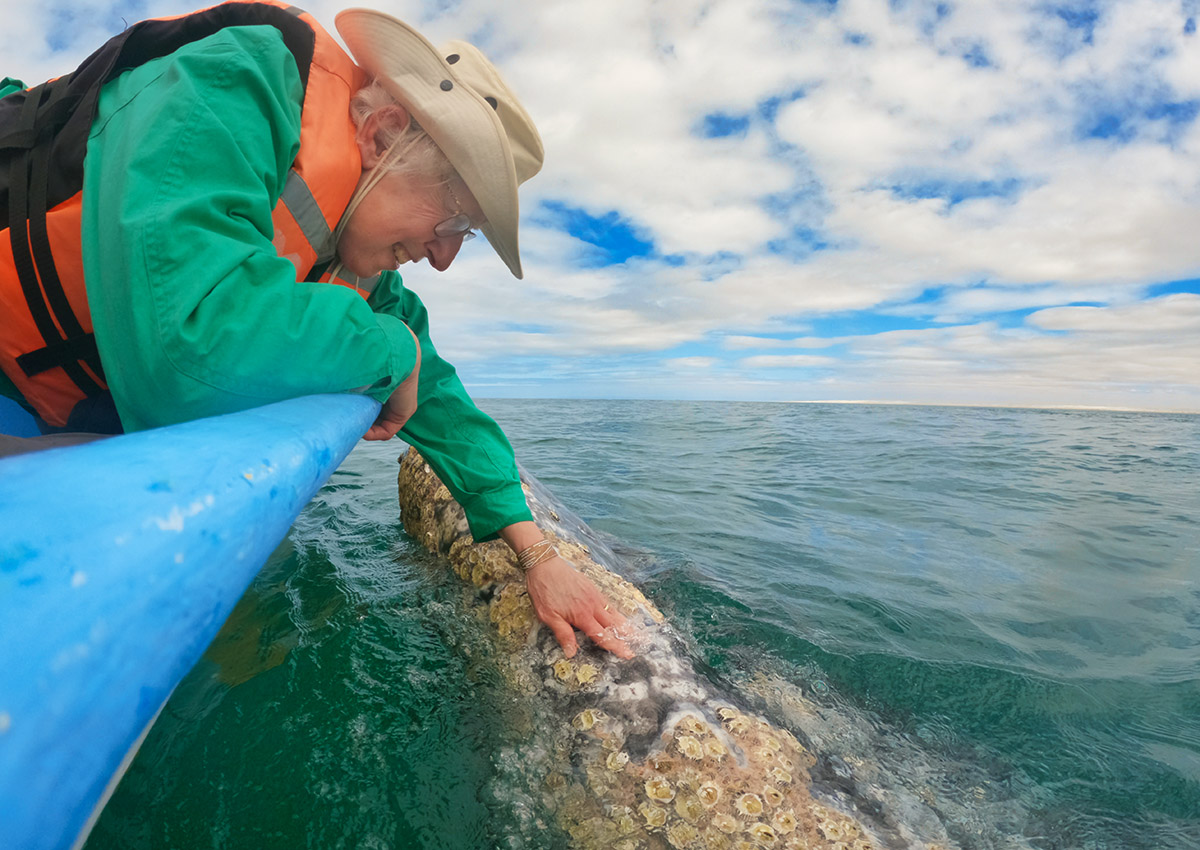
The rule in wildlife viewing is to look but not touch. This is a notable exception because the gray whales in Baja California exhibit behaviour found nowhere else.
During our orientation, we were told that it is okay to touch a whale if it initiates the behaviour, but not to touch its eye, mouth, fin, blowhole or tail.
Sometimes a whale beside the boat would spout water, covering us with salty spray. While this is a normal part of breathing, we couldn’t help but wonder if the shower at close quarters was part of their playfulness.
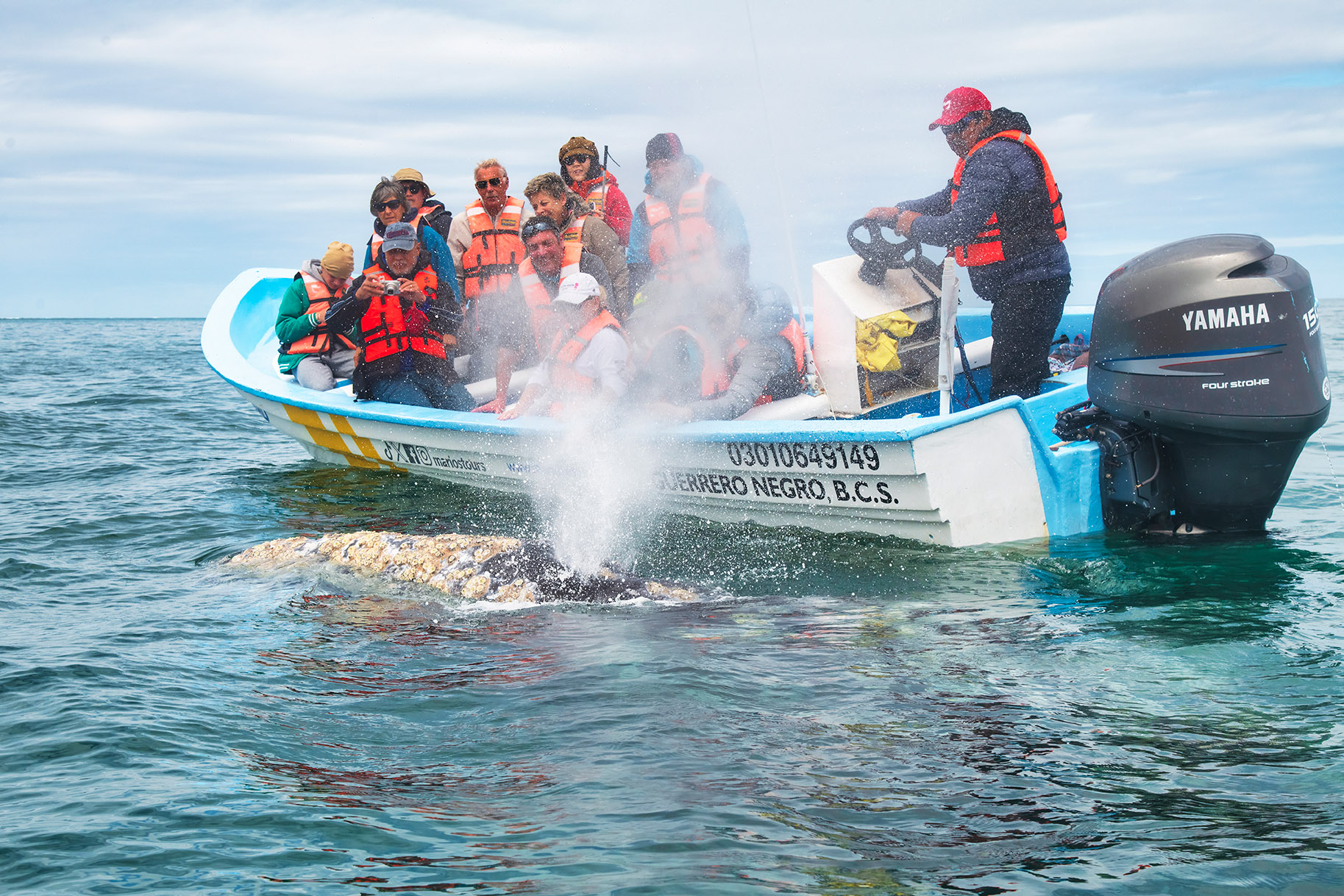
Mothers brought their calves close to our boat. Newborns are impressive in their own right, stretching more than four metres and weighing nearly a tonne.
The most dramatic behaviour was breaching, in which whales launch themselves into the air and fall back with an impressive splash. Seeing such a massive creature become airborne is unforgettable.
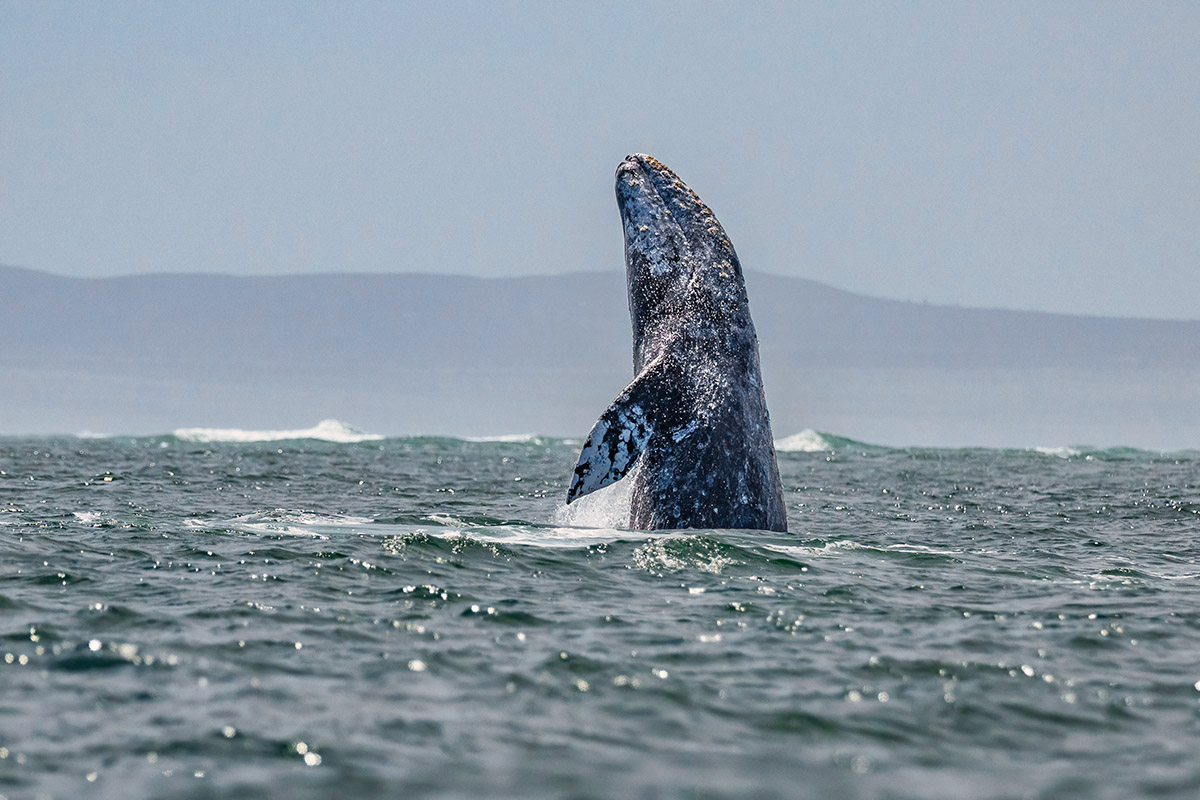
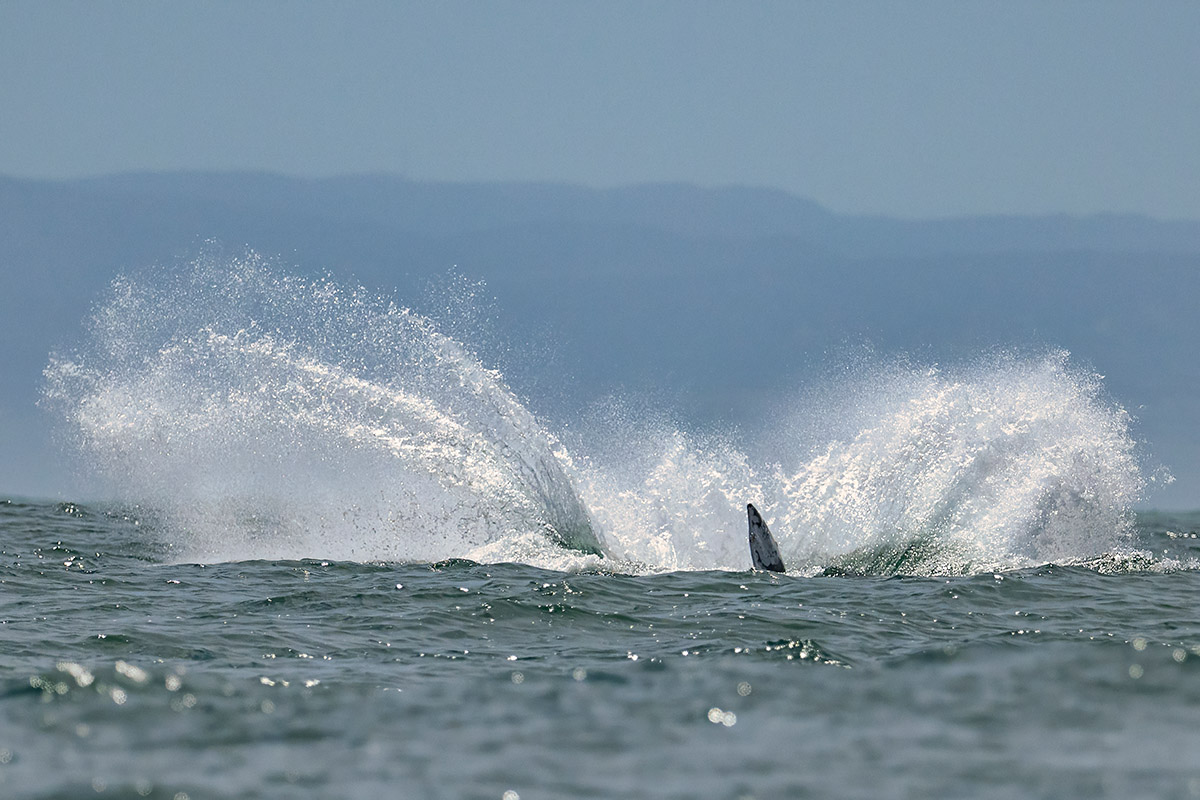
Why do whales here seek human contact?
Why whales here seek human interaction remains a mystery. Scientists think that gray whales approach boats to connect with people. If passengers in one boat don’t reach out to touch them, it’s not unusual for them to move on to another boat.
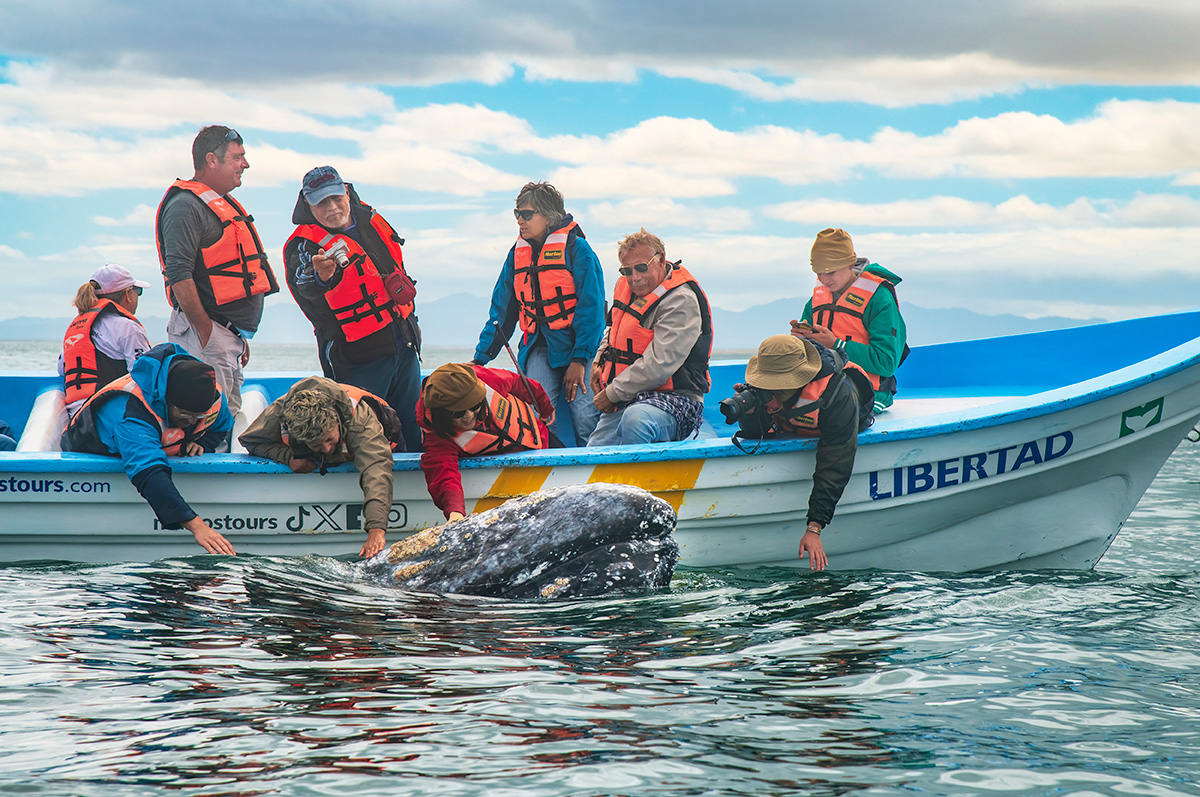
One reason could be that they are relaxed and feel safe. The lagoons do not have killer whales, which prey on calves during their migration.
It is believed that the whales see people as neither prey nor threat; that they are simply curious about these odd creatures that get so excited to see them.
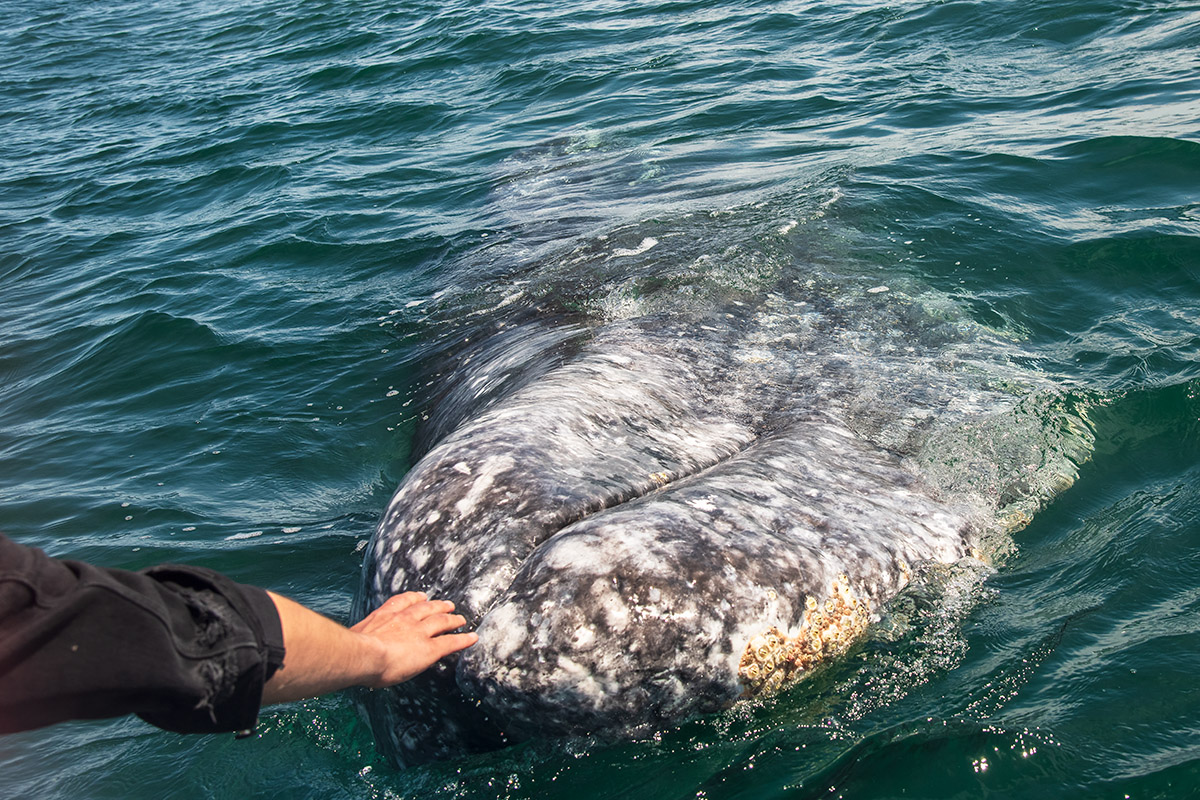
Local fishermen familiar with whales have a more straightforward explanation. The whales know that they were born in these protected Mexican waters, and they’re simply happy to be back home.
The photography experience
The photo possibilities are outstanding, so it’s best to be prepared. Unlike so many other wildlife adventures, even most other whale watching excursions, the action takes place at fairly close quarters. So wide-angle capability is a must. We took a lot of our shots with a 24-120 mm zoom lens. Some people rely on cell phone cameras, and this is one place where they can certainly do the job, at least for the close shots.
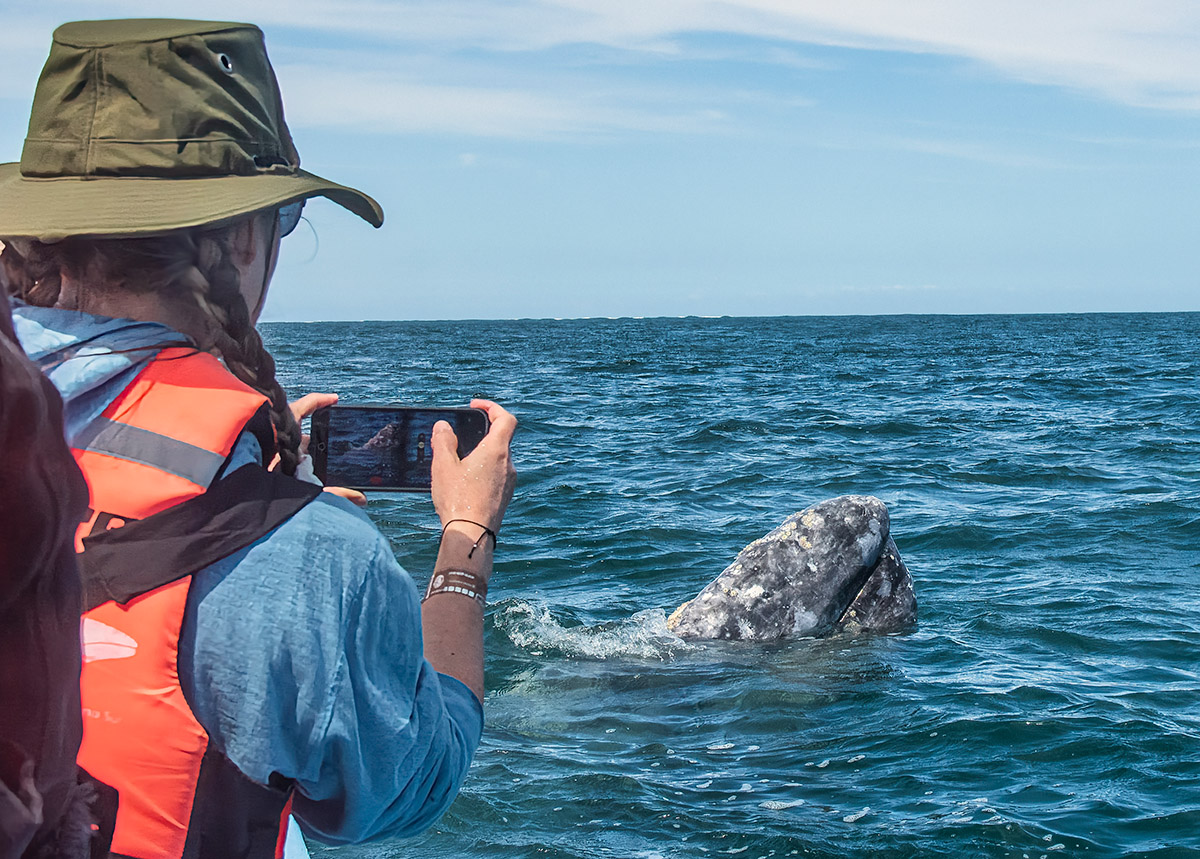
For images such as whales breaching, which took place farther in the distance, a longer reach was definitely necessary. We had a 180-600 mm zoom lens attached to a separate camera body, which we used for those shots.
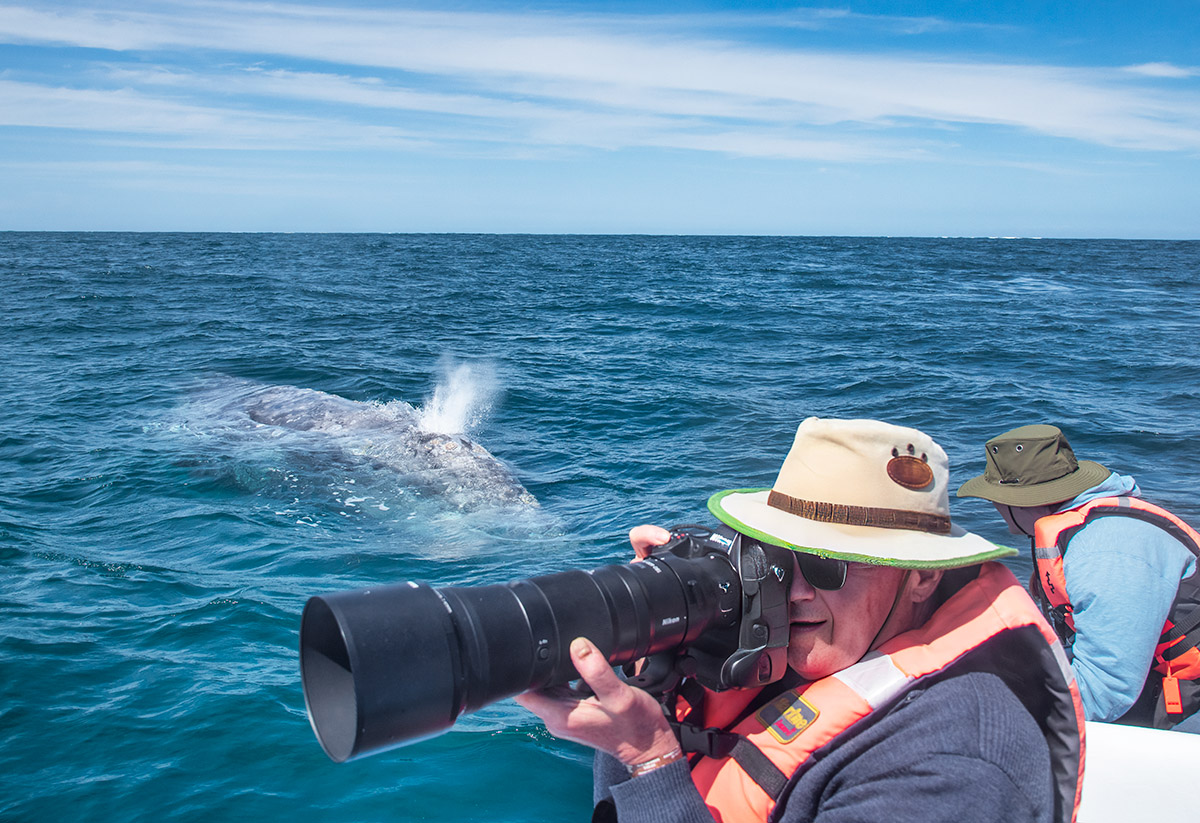
When to go
The gray whales are usually around from late December to early April, with mid-February to mid-March generally considered prime times. However, this could vary from year to year. While gray whales are a highlight, it is possible to see up to nine whale species in Baja California Sur.
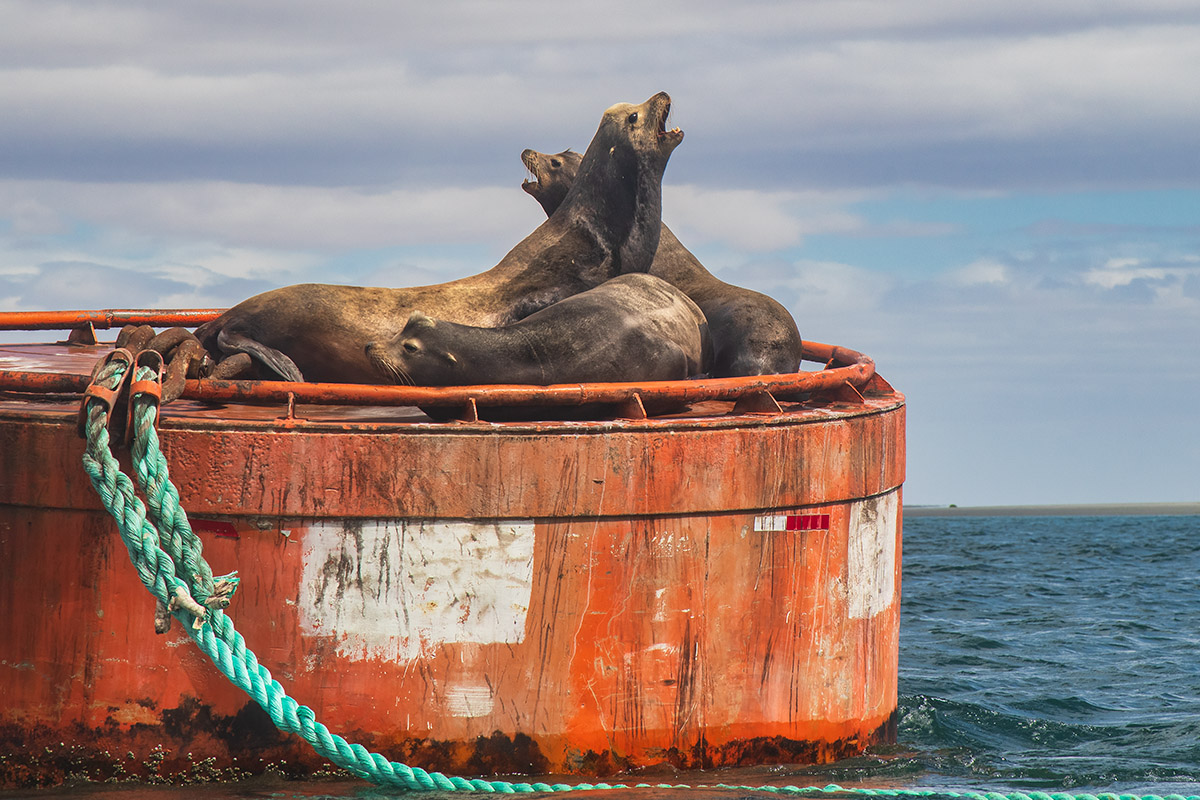
The most convenient place to fly into is Loreto, a small colonial city in the centre of the state surrounded by other natural attractions such as breathtaking coastlines and beaches, rugged mountains and colourful deserts. We travelled there on a four-hour flight from Calgary – the only place in Canada with non-stop flights to Loreto. Westjet operates this service once per week from November to early May.
Resources
For more details, see Loreto Tourism.
For other travel ideas in Baja California Sur, see our postings:
Exploring Loreto, Mexico’s Magic Town in Baja California Sur
Turquoise Waters & Tantalizing Tastes: Exploring Mexico’s Conception Bay
SUBSCRIBE to Photojourneys below
Feel free to PIN this post on Whalewatching in Baja California Sur, Mexico
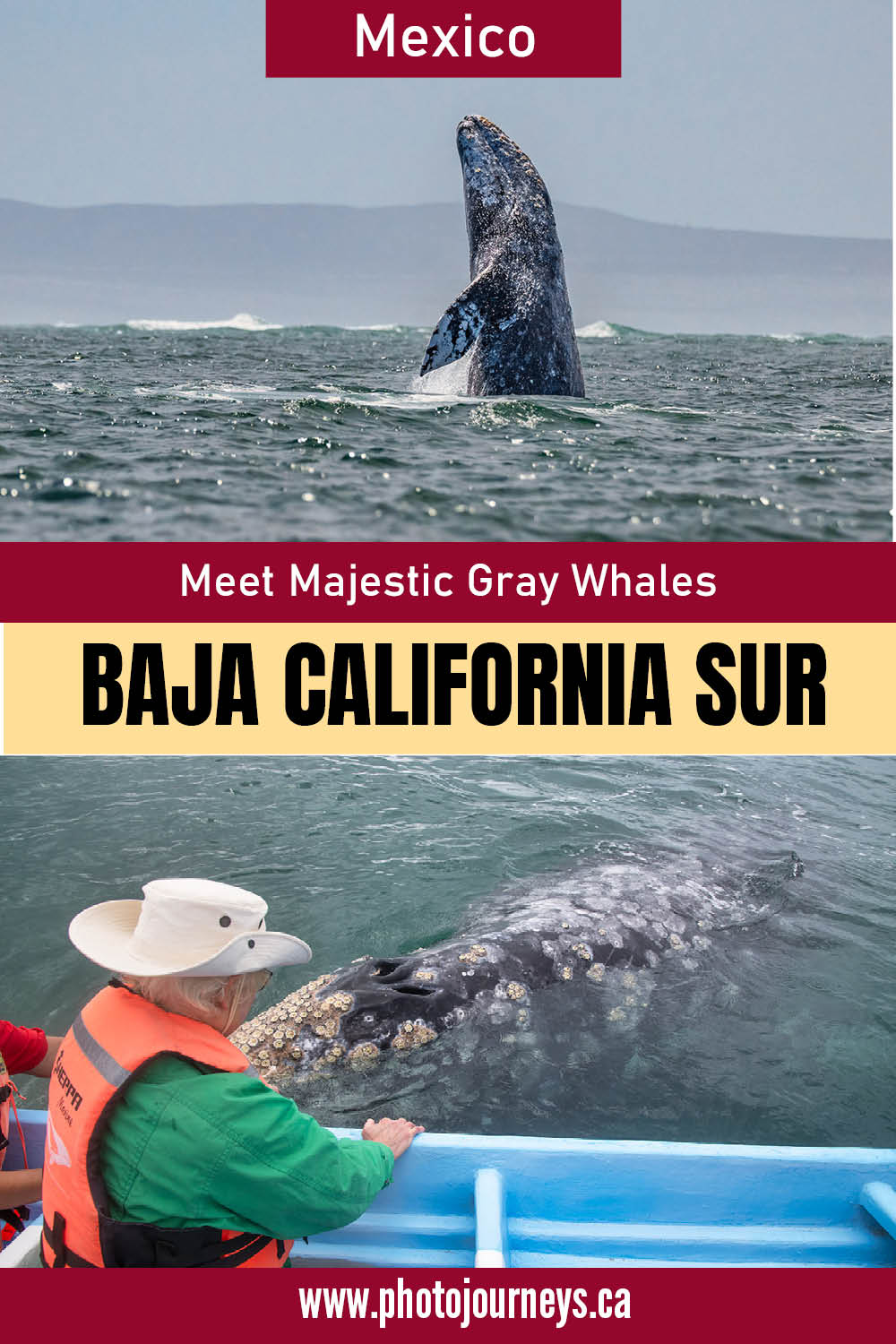


That looks like an amazing experience. Thanks for sharing it.
Our pleasure. We had heard about these experiences but to actually see it for ourselves was truly wonderful.
Great article! I love all the shots of the whales breaching. Amazing how they are curious enough about us to come to the boat.
You’re right. How special it was to get so close to an animal that size. This was definitely among our top wildlife experiences ever.